The Palau archipelago is located in West Pacific Ocean, east of Philippines. The archipelago is composed of more than 250 islands. Those islands are for most of them inhabited and they are mainly covered with tropical forest and mangrove. This short presentation is by itself forewarning nice adventures. But adding to that a lake full of jellyfish makes Palau become an even more extraordinary region.
Location of the Jellyfish lake
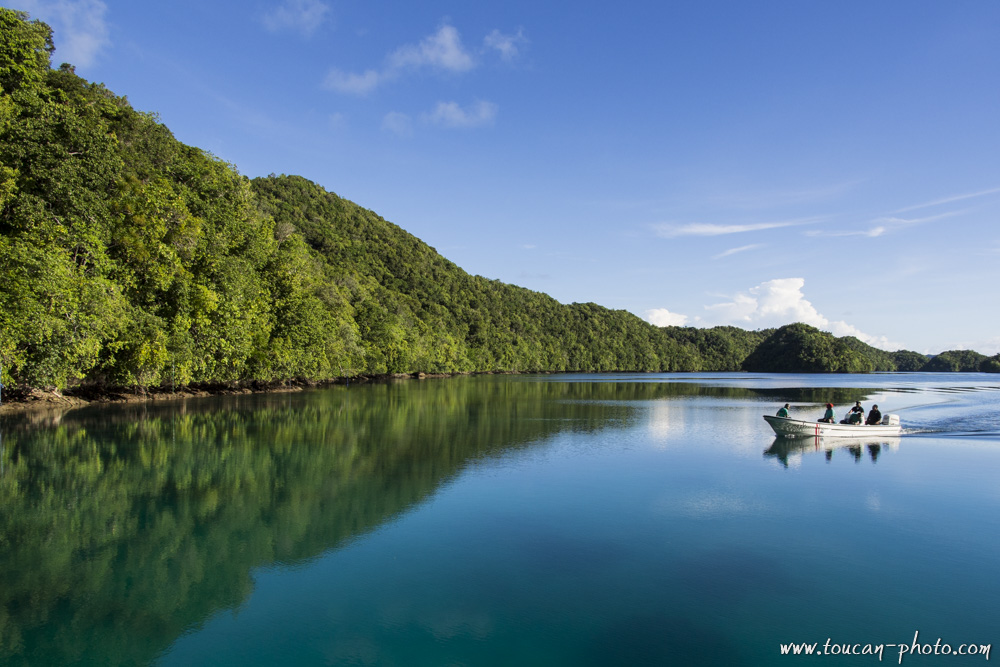 A boat near the Eil Malk Island
A boat near the Eil Malk Island
The Eil Malk Island (or Mecherchar) is 6km long and 4.5km large. Its surface area is about 19km². As most of the islands of the Palau archipelago and because of its small surface area, Eil Malk is not habited by Humans.
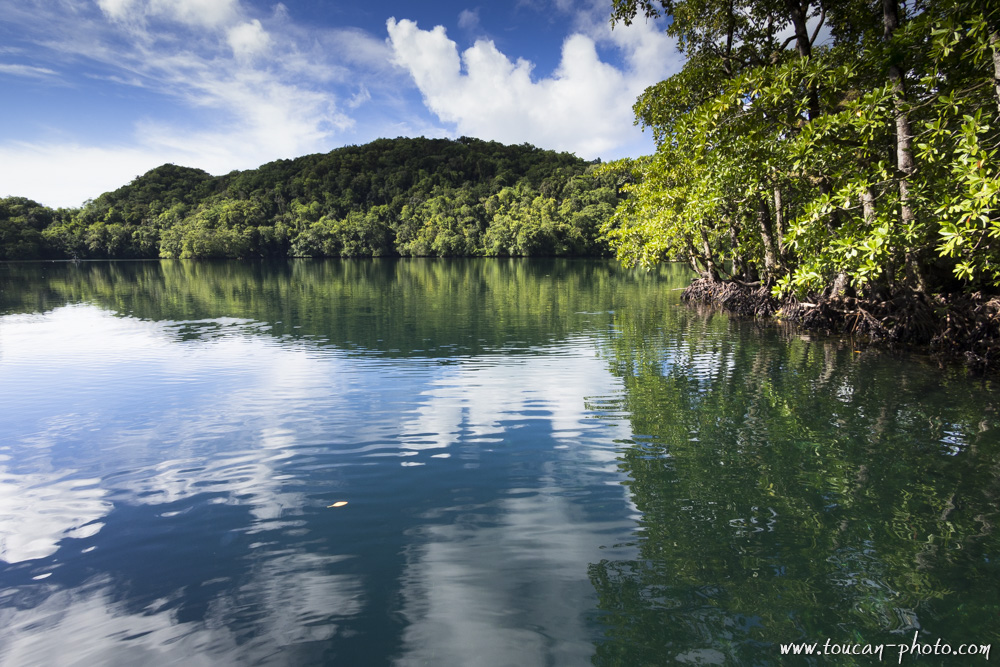
This island has several lakes. One of them, located in a tropical forest and surrounded by mangrove, looks like many other lakes if you stay on its bank when looking at it…
…but if you go underwater, you can discover the treasure it offers…
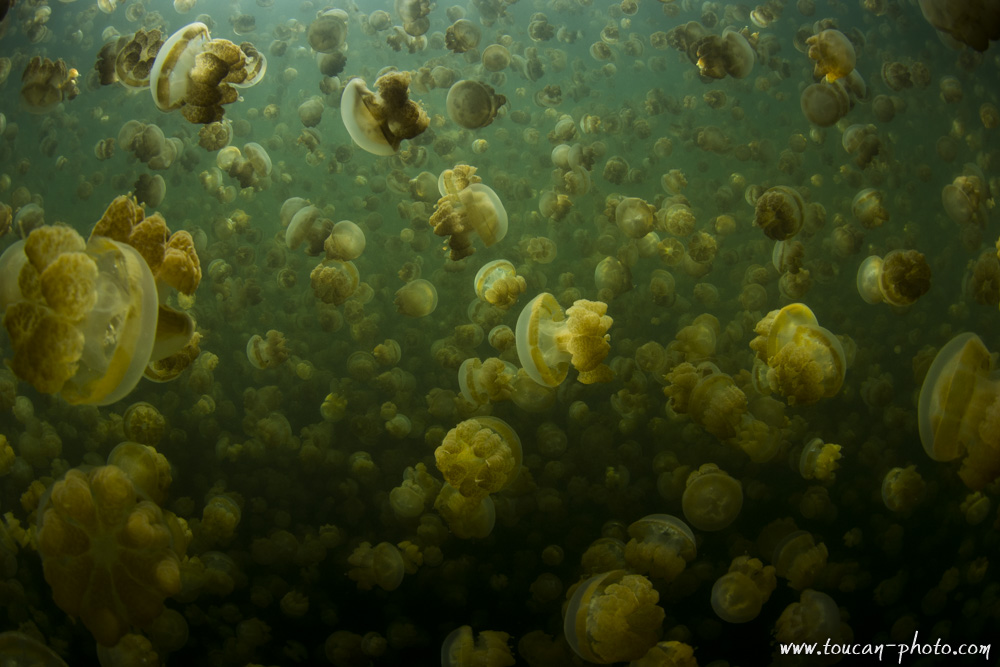 …welcome to the Jellyfish lake!
…welcome to the Jellyfish lake!
In the past, the level of the oceans was higher than today and the part where the lake is located was covered by the sea. 12000 years ago, the level of the oceans decreased and the water went away of the island but the bowl-shaped soil kept a huge volume of water as well as animals that were living there. This is how the Jellyfish lake made its form (we call it Ongeim’l Tketau in Palauan).
Ever since, the Jellyfish continued living and have overrun the lake. The lake has nowadays no contact with the sea but remains supplied by rainwater.
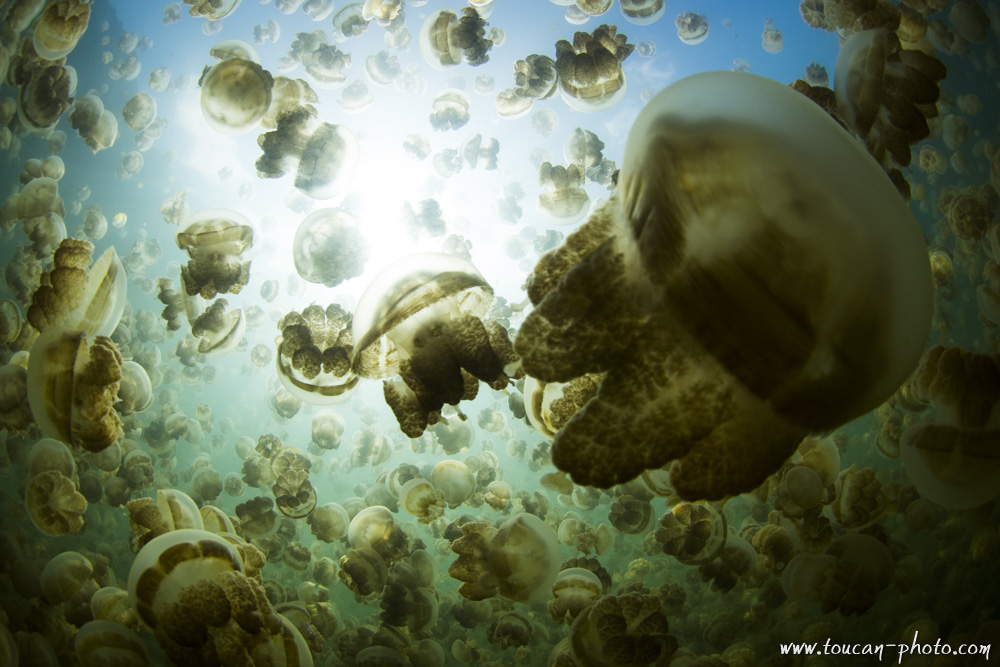
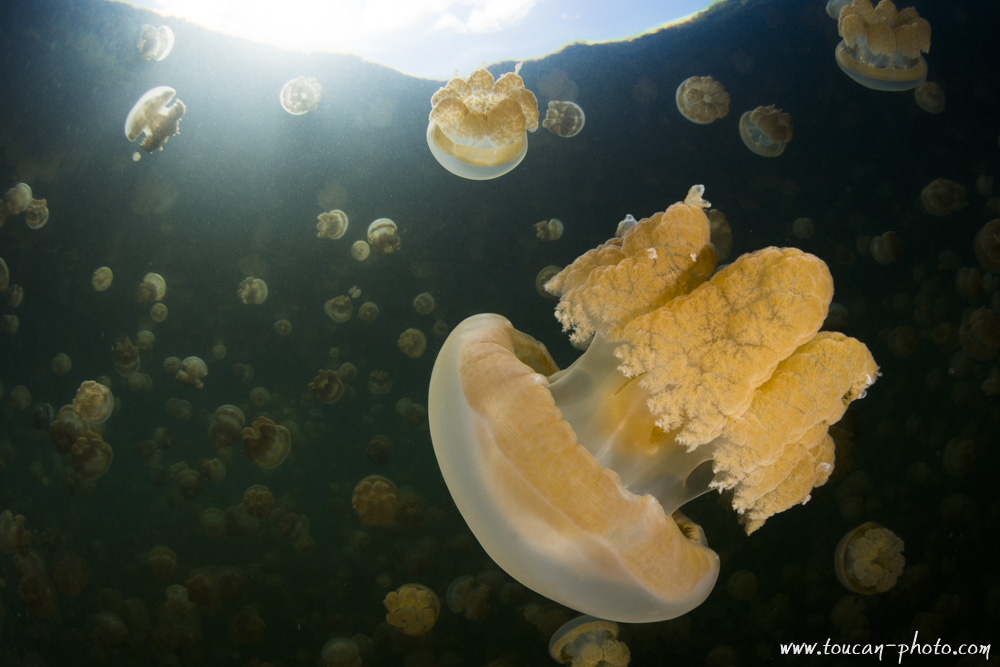 Golden Jellyfish (Mastigias sp.)
Golden Jellyfish (Mastigias sp.)
The the lake, the Jellyfish are mostly “Golden Jellyfish” specie (Mastigias sp.) and “Moon Jellyfish” specie (Aurelia sp.)
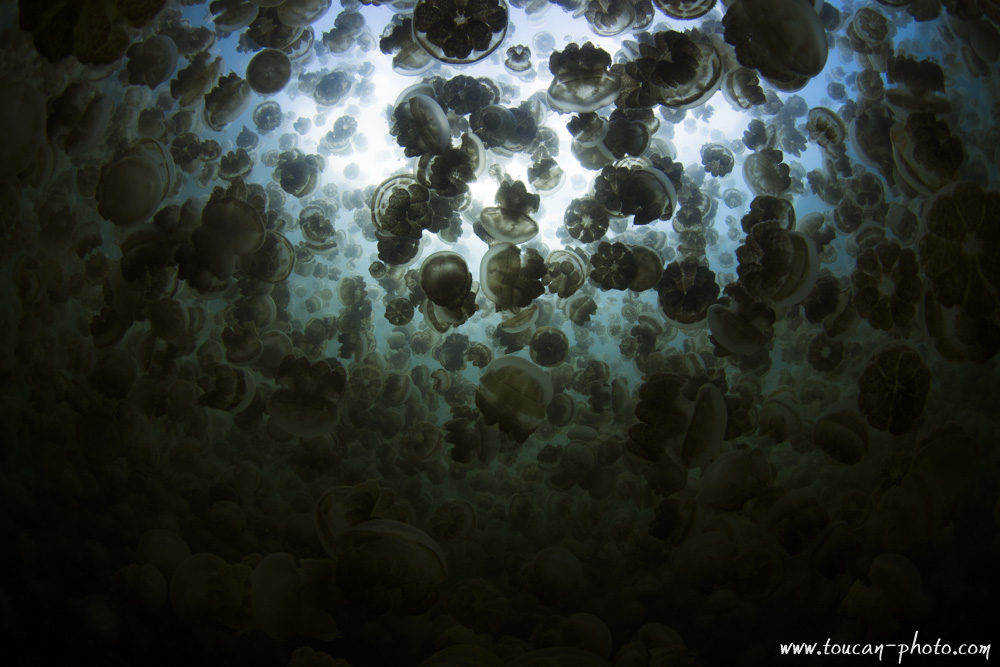 A bit more than many jellyfish
A bit more than many jellyfish
The lake has a surface area of about 57ha and measures 460 meters long for 160 meters large. Being populated of about 8 millions of Jellyfish, it is quite difficult not to meet some on the way.
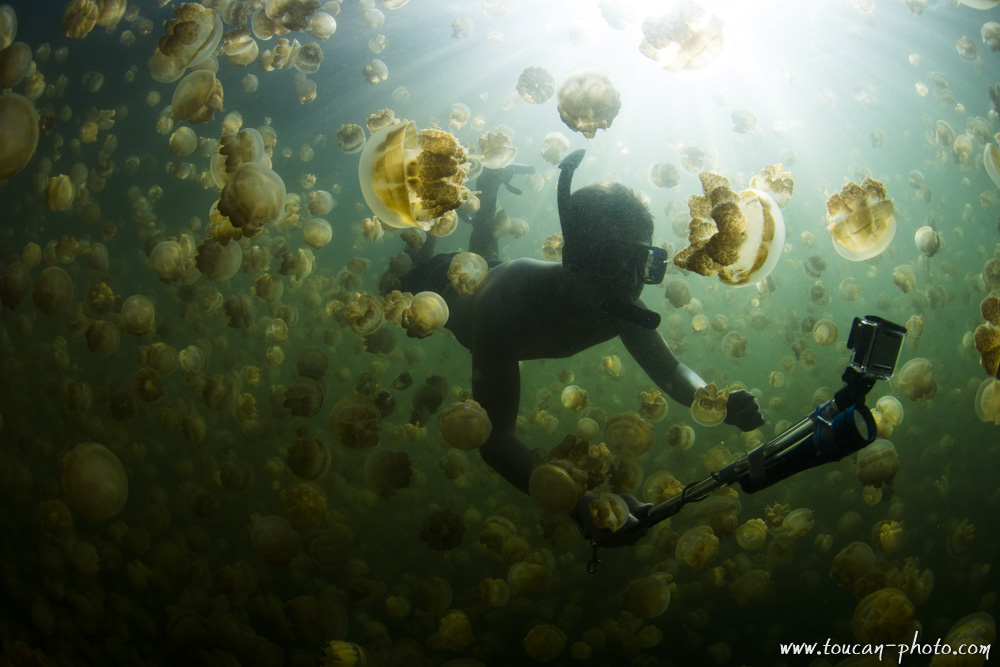 A swimmer among the Jellyfish
A swimmer among the Jellyfish
Jellyfish are not dangerous for swimmers but unlike some ideas they did not lose their urticaria cells. If Jellyfish seem like harmless for Humans, it is because their “bites” caused by their urticaria cells are way too small to cause damages to the skin.
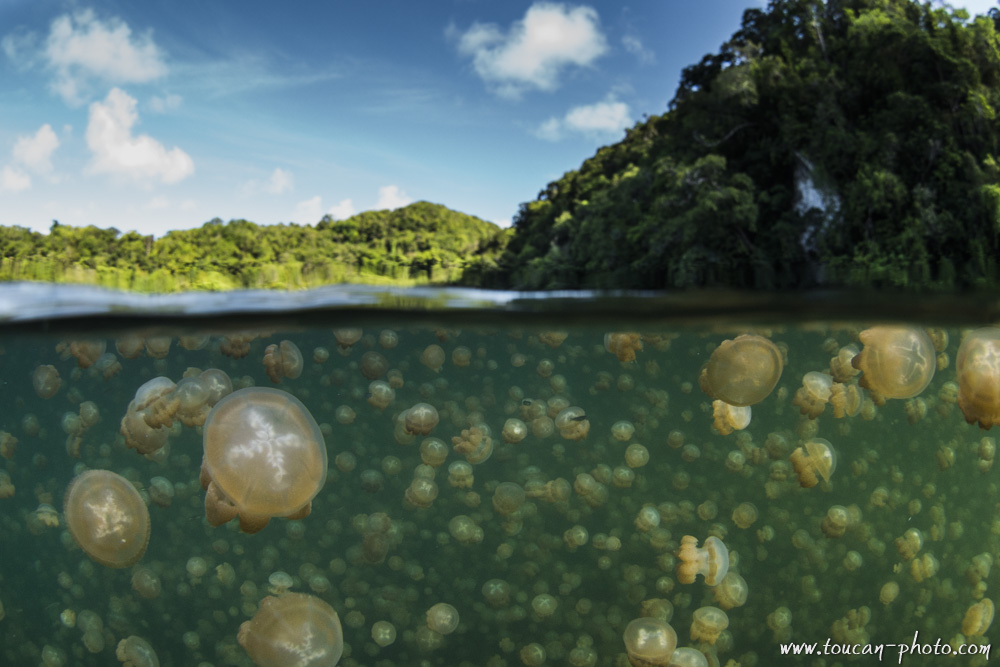 Half-water-half-air view from the lake. Golden Jellyfish went back up to the surface
Half-water-half-air view from the lake. Golden Jellyfish went back up to the surface
All day long, Jellyfish are moving at the surface of the lake in order to maximise their exposure to sun rays. Indeed, Jellyfish have in their body symbiotic organisms called Zooxanthellae. This single-celled planktonic organisms need sun rays to produce, by photosynthesis, different nutrients. These nutrients are then shared by the Jellyfish in exchange of the protection they provide.
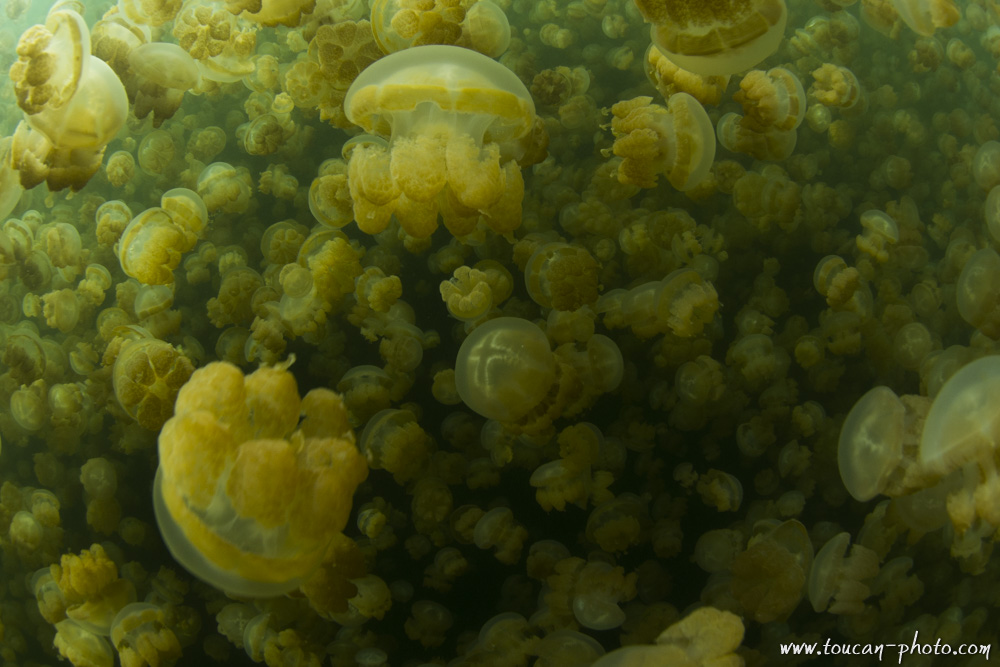 Jellyfish diving deeper
Jellyfish diving deeper
Jellyfish also dive deeper to absorb nutrients that are not available at the surface, such as nitrogen. However, they do not go deeper than 15 meters, because beyond that the water becomes anoxic (that is to say, it no longer contains oxygen) and is then toxic for most living organisms.
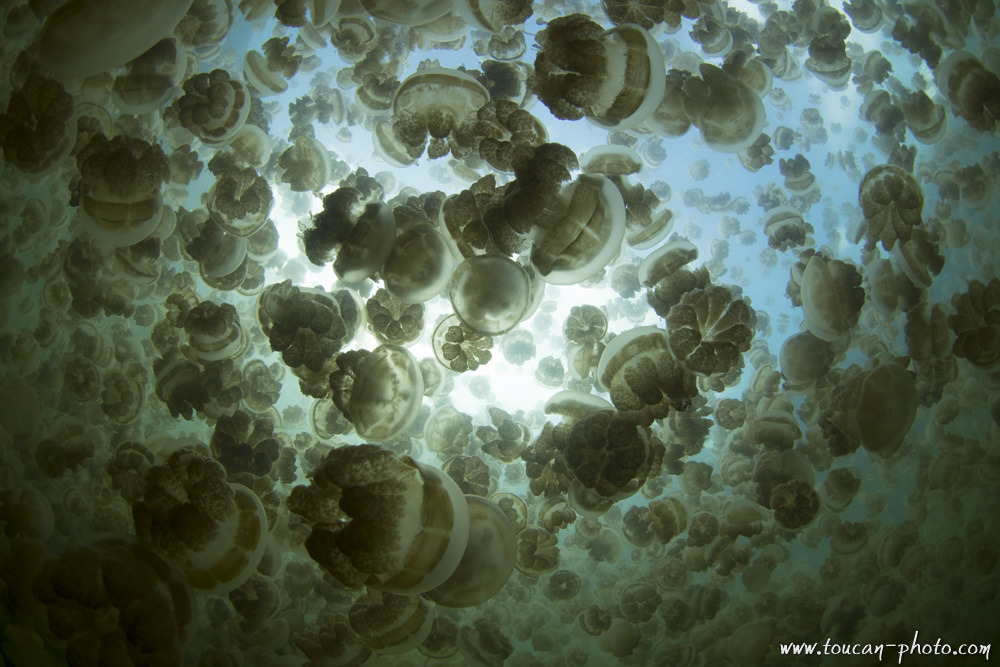 Under a Jellyfishy sky
Under a Jellyfishy sky
Since beginning of 2016, the Jellyfish colony unfortunately sharply reduced. We count normally more than 8 millions cnidarians in the lake but in April 2016 only 600 000 creatures were left. The number of Jellyfish has never been that low in 65 years. Scientists have no explanation for this but they suspect the El Nino phenomenon of being responsible. This drought episode reduced drastically the level of the Ongeim’l Tketau brackish water lake. Mechanically, the salt concentration increases as the water level decreases. Unfortunately, too much salt prevents the development of jellyfish and leads to their disappearance
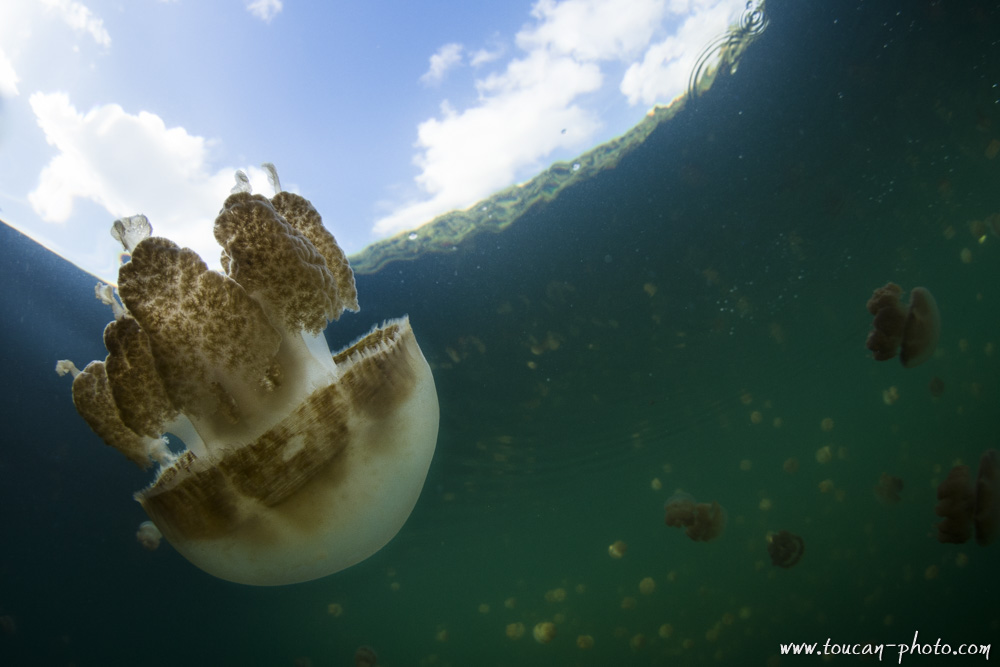 A view of the lake without the 8 millions of Jellyfish, normally there
A view of the lake without the 8 millions of Jellyfish, normally there
A similar situation has already been observed at the end of the 90s (date at which the El Nino phenomenon occurred). After that event, the number of Jellyfish was able to rebuild. We hope it will be the same this time.
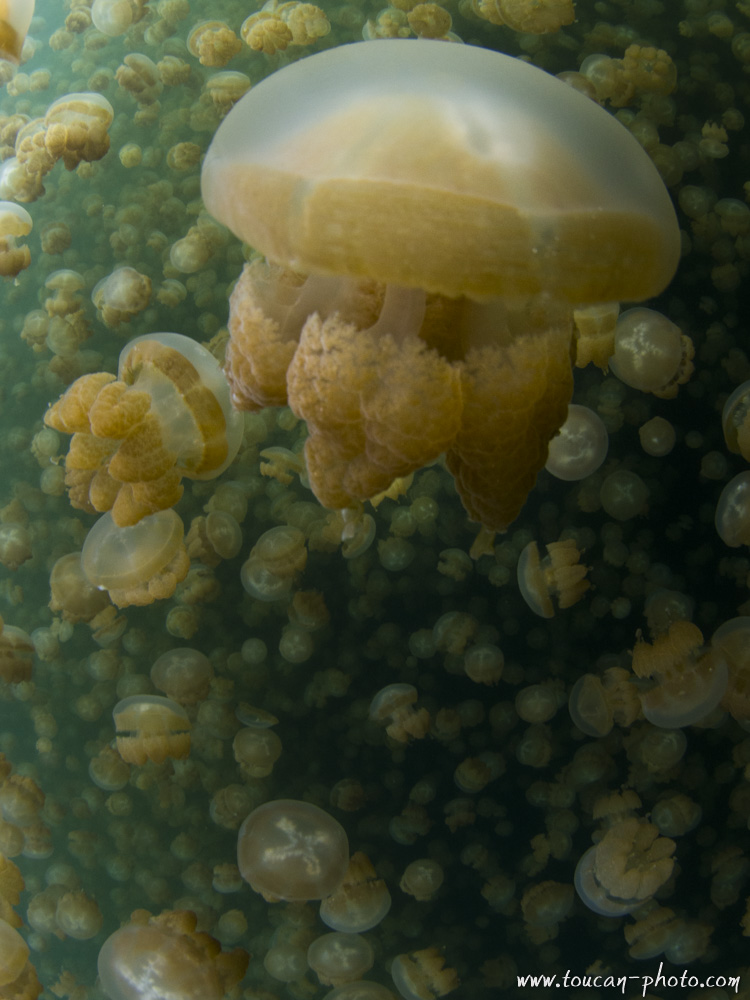
To read more about Palau and the Jellyfish lake:
Palau on Wikipedia (EN)
The Palau official website (EN)
The Jellyfish lake on Wikipedia (EN)
A National Geographic statement on the disappearance of Jellyfish (EN)